Katmai National Park
Even if you have never been to this National Park, it is extremely likely you’ve seen pictures of it. Coastal brown bears (i.e. grizzly bears) visit the Brooks Camp area of the park every July and September (with a few sticking around in August) to feed on millions of sockeye salmon as they make their annual run starting in late June through the area’s rivers and lakes before spawning in the August & September timeframe. You’ve likely seen the iconic photos of Brooks Falls as salmon jump right in the mouths of the many bears standing on top of the falls. There is more to Katmai than just bear viewing though. It is also the home to the largest volcanic eruption in modern history at Novarupta (1912) and there are plenty of fishing & photography opportunities throughout the park if that is of interest to you.
Most Recent Visit
September 2024
When to Go
Almost everyone that visits this park is doing it for the bears and we are no different. There are effectively two peak times to visit for the best bear viewing: July and September. July is by far the most popular time. There is a lodge and campground you can stay in (more details below), but you can also visit on a day trip. There are far more day trips in July than September leading to extreme crowding throughout the day. For example, if you want to visit Brooks Falls in July, you’ll likely be waiting in a 1–2-hour line to get to the falls and you will be limited to 30 minutes on the viewing platform. Both of our trips have occurred in September which is a much more laid-back time with just as many bears around. Another perk is that the bears are much larger in September than July. If you ask any ranger what their favorite time of year is the answer is almost always September.
July Pros:
- Peak salmon run leading to an extraordinary number of bears at Brooks Falls.
- Opportunity for the iconic photo of a salmon jumping into a bear’s mouth.
- Good weather is more likely.
July Cons:
- Extremely crowded due to number of day trippers.
- Bears are more concentrated at Brooks Falls leading to long lines and limited viewing time.
September Pros:
- Bears are more spread out on Brooks River, Brooks Falls, and even Brooks Lake.
- Bears are extremely large at this point as they are trying to fatten up before hibernation. Fat Bear Week occurs this month every year.
- Fewer people and no limitations on viewing platform time.
September Cons:
- Weather is hit or miss. It can get fairly cold, and rains frequently so be prepared with rain gear.
- Less salmon jumping at Brooks Falls. If you want that iconic ‘fish jumping into mouth’ photo, it will be much harder to achieve in September.
We have had a couple of friends go in late August and there was still a number of bears around. That could be an option if you are looking for fewer people and potentially better pricing. To give you an idea from our two September trips: In 2022, there were points where we could see 23 bears at once by the boardwalk (i.e. “the bridge”). In 2024, it was more like 11 bears at once as there were fewer salmon running in 2024 which caused a number of bears to leave in July and not return in September. The size of the salmon run will dictate the number of bears each year particularly in September.
How to Get Here
There is no cheap way to do this which is unfortunate. However, in our opinion, it is well worth the cost to do this at least once in your life if possible. Here is your travel plan:
- Fly Anchorage to King Salmon – this can be done on Katmai Air ($900 RT in 2024) or on Alaska Airlines which runs a couple of flights during the summer (~$600 RT in 2024)
- Shuttle from the King Salmon Airport to the Katmai Air float planes or water taxi service (discussed below)
- Fly on a float plane from King Salmon to Brooks Camp via Katmai Air ($450 RT in 2024)
- Alternative option: take a water taxi from King Salmon to Brooks Camp ($450 RT in 2024)
Got your calculator out? If you fly Katmai Air, your transportation will cost you $1,350 round trip. If you fly Alaska Air, it will cost you $1,050 round trip (2024 prices). Given the limited flights with Alaska Air it is really only possible to fly them if you are overnighting at the lodge or the campground.
Day Trips
- If you want to try the day trip option from Anchorage, you’ll need to go through Katmai Air or find another tour operator. Katmai Air’s Day trips leave Anchorage around 7-8am and return around 6:30-7pm each day. About 5 hours of that timeframe is going to be travel (2.5 hours each way) which means you’ll have 6-7 hours on the ground to view bears for ~$1,350 per person.
- Another option would be to pair this with a trip to Lake Clark National Park. The Lake Clark Resort Farm Lodge has a variety of tour options which include flying into Katmai. We loved our time there and hope to go back again in the future. Check out our Lake Clark page for more details.

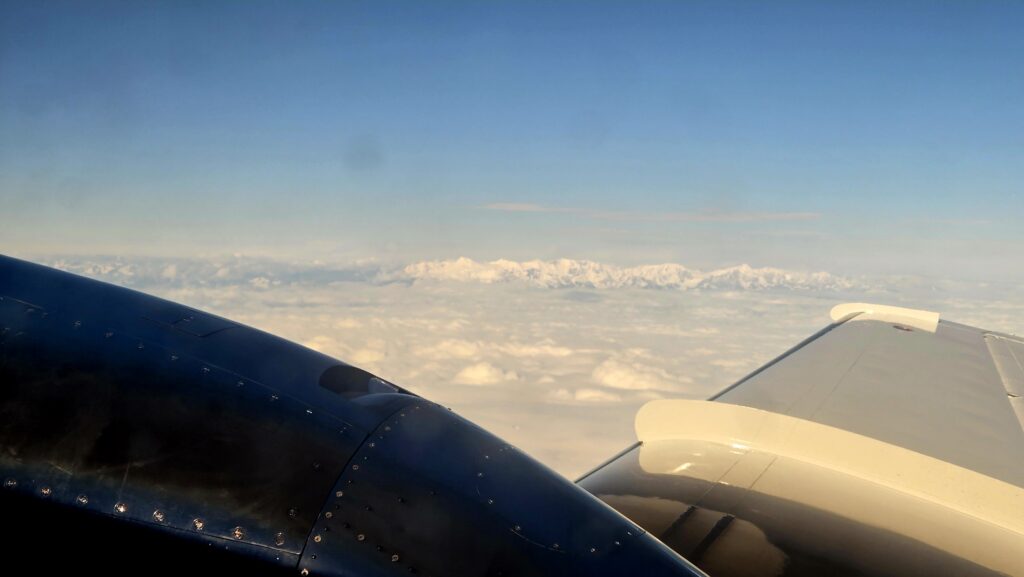
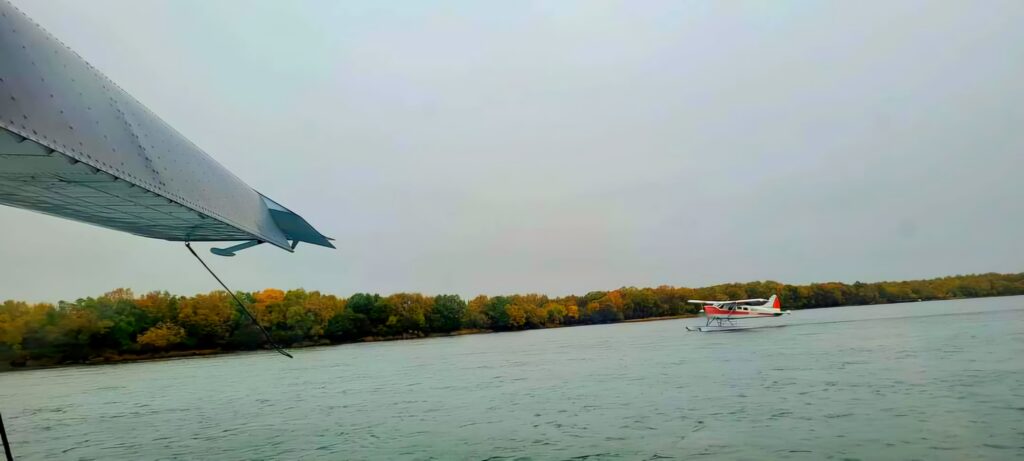



Trip Length
We have done a 2-day trip in the lodge and a 3-day trip in the campground. In our opinion, 3 days is the optimal time to be at Brooks Camp especially if you are going to do some of the other activities outside of just watching bears which we will discuss more below. Obviously, if you are on a day trip you don’t have a choice here. There are some people that stay for weeks at a time (typically at the campground). These people are generally professional photographers that come back year after year looking for that perfect photo to sell. While the bear viewing is awesome, you’re probably going to get a little bored with it after about 3 days.
Where to Stay
If you are overnighting at Brooks Camp, you have two options: Brooks Lodge or Brooks Campground. Let’s discuss the process here as it is somewhat complicated and requires advanced planning. You can’t just show up and expect a room or a campsite. In fact, you can’t even sign up for a room if you are a year out from you trip as they will be fully booked already.
Brooks Lodge
- Due to the popularity of staying at Brooks Lodge they run a random lottery system TWO years in advance.
- The rooms are not 5-star hotel rooms. You will get 4 single bunk beds and a very basic private bathroom inside of an individual cabin.
- Price of a cabin in 2024: $1,125 per night!! (or $281.25 per person if you have 4 people to split the cost). For comparison, this was $850 per night in 2022 so we imagine this will continue to increase over the years




Brooks Campground
- Reservations for a Brooks Camp Permit have to be obtained from Recreation.gov and become available in early January each year (Jan 5, 2024, for the 2024 summer season as an example) so a little less crazy than the lodge lottery above.
- We have gone through this process once and all dates were sold out within seconds of the reservation system opening up in January. We did notice as we got closer to our September trip, there were a ton of cancellations and campsites became available, so don’t fret if you don’t immediately get a spot. When we arrived in September there were 20 openings of the campground’s max capacity of 60 people.
- There is an electrified fence around the entire campground to try and deter bears from entering. You will have pit toilets and a sink with drinkable water in the campground. There is also a food cache (which is mandatory for anything you have that has a scent) and gear cache. We even kept our clothes in the gear cache to keep the tent as free as possible and to ensure they stayed dry on rainy days.
- You must bring your own gear or rent gear before traveling to Brooks Camp. No gear is available at Brooks and if you show up without it, the website makes it clear you will literally be sleeping on the ground with no shelter.
- Price of a campsite per person in 2024: $18 per night plus a $6 reservation fee (ex: 2 people for 3 nights will cost $114 total or $19 person/night).





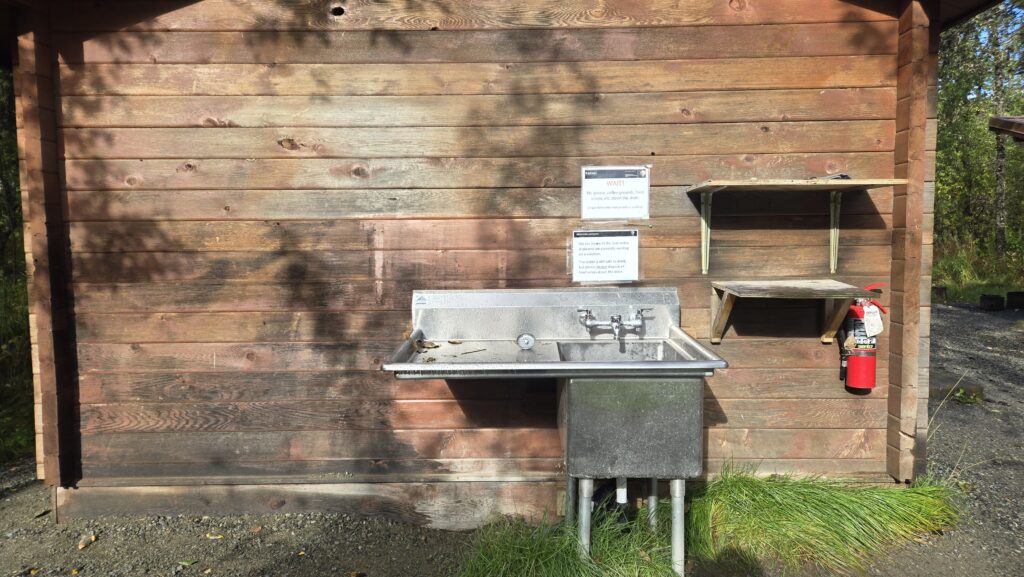
The lodge serves breakfast, lunch, and dinner to anyone at Brooks Camp. You don’t have to be staying at the lodge you can purchase meals/beverages if you are a day tripper or a camper. The meals are not cheap, but they are all you can eat buffets which in our experience are quite good. You can pay by credit card as you enter the buffet. There is also a bar (drinks only), that takes credit cards, which is open in the late afternoon and evening each day.
There are other lodges in Katmai that are more focused on fly fishing such as Grosvenor Lodge, but we have no experience with those.
What to Do
Once you arrive at Brooks Camp you will be greeted by a park ranger and immediately be herded into the Visitor Center to go through a mandatory “Bear School”. This takes about 20 minutes and gives you important tips on how to stay safe during your trip and ensure that you don’t disturb the animals in their natural habitat. As this spot becomes more popular, it’s important to remember this is not a zoo. While it is generally safe, adhering to the park rules and using common sense is required to avoid potentially dangerous situations.

Bear Viewing
The majority of visitors come to Katmai for the world-famous bear viewing. Few, if any, places in the world have more bears around at once (during July & September). The best place to do this is Brooks Camp where there are two main locations to watch bears: Brooks Falls and “The Bridge”. The park actually has several bear cams placed in both locations which allow you to observe from the comfort of your own home.
Brooks Falls is the famous photo spot where bears stand on top of or below the falls and wait for the sockeye salmon to come to them for a meal. The falls are located about 1.2 miles from the main Brooks Camp area so it will be a 2.4-mile round trip walk to get there and back. You will be on an open trail (no gates/fence) which may be shared by bears. On our first trip, we had no bear encounters on the trail between the lodge and the falls. On the most recent trip, we had four bear encounters on the trail. Each encounter required us to back up slowly and eventually get off the trail to let the bears pass by. The falls are the best spot for bear viewing in July.





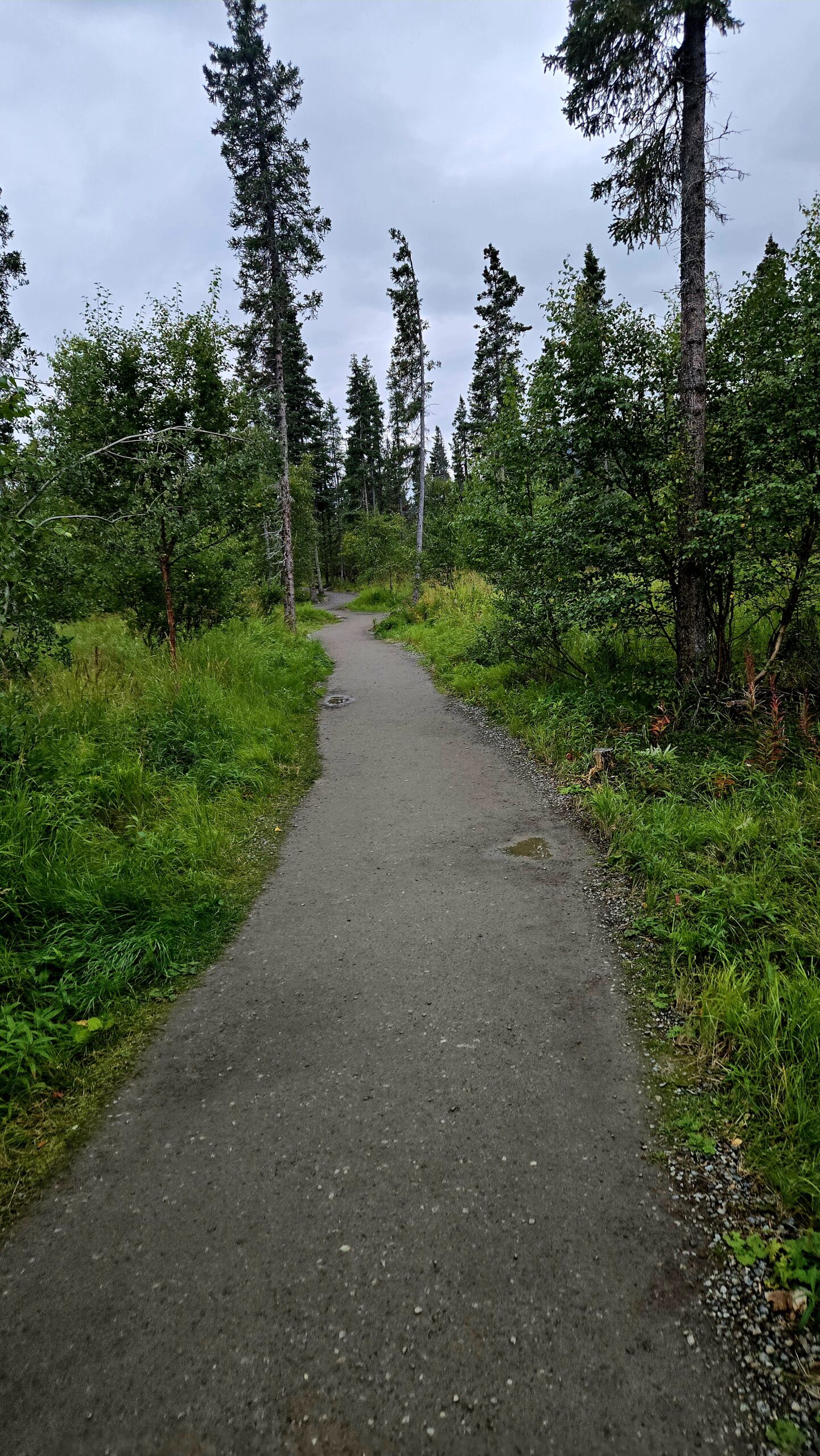


The Bridge is a much more secure area if you are concerned about walking on open trails and taking a chance of bear encounters. The Bridge is effectively a boardwalk with two secured gates on both sides to keep any wildlife out. In September, this is typically the best spot to watch the bears as most of them are down in Brooks River or Naknek Lake which the bridge overlooks. There are platforms that are supposed to be used for bear viewing instead of stopping along the bridge, but no one actually listens to that rule (or enforces it), so you can really stop anywhere on the boardwalk. Bears frequently come up close and swim under the bridge in spots so you will get plenty of close-up pictures even if you don’t have a great camera. The key is to be very quiet while on the boardwalk so that you don’t disturb the bears as they are fishing.






It should also be noted, bears can actually be anywhere at Brooks Camp. Bears frequently cause delays in float plane loading/unloading because they are walking the beach at that time. There is no fence around the buildings. On our first visit, we were in the lodge having lunch and a cub had been separated from its mother and chased up a tree by a male bear. We were all held in the lodge until the cub came down as the rangers were concerned that the mother would come into the area and be aggressive. Another time, we were trying to leave our cabin but opened our door and saw a large bear munching on some grass not far from our door. Rangers eventually came and encouraged him to move on. We heard a story of people finding a large grizzly bear on their cabin porch. In the event that you find yourself in one of these scenarios, the only thing to do is wait. Rangers do ‘patrol’ the area and try to ensure that the bears keep moving through the main area instead of spending a lot of time in the ‘human zone’, but the bears take priority.
This is a wild place, not a zoo. On our first trip in 2022, we arrived and saw a mom and four cubs almost as soon as we arrived. One day later, one of the cubs had been killed by a male bear. While the bears main priority is getting fat for hibernation, the males are also thinking about mating in the spring. They often try to kill cubs in order to incentivize the female to mate the following year. On rare occasions, they may kill cubs for food if they are desperate.


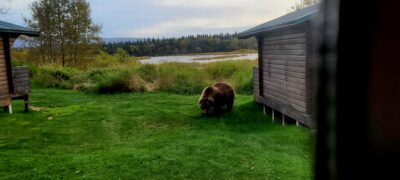

Valley of Ten Thousand Smokes Tour
Brooks Lodge runs a day long bus tour (typically 9am-4pm) on a daily basis while the lodge is open (early June to mid September) out to the Valley of 10,000 Smokes. Just so we are clear, this isn’t a comfortable tour bus…it is a school bus. The trip is 23 miles one way, and it takes 2-3 hours to make that journey with a couple of scenic overlook stops on the way out. The bus will cross 3 rivers on the way out which is fun to experience. In 2024, the price of this tour including a sack lunch was $110 ($96 without sack lunch). We recommend including the sack lunch as there really isn’t a lot of food options at the lodge cache to purchase on your own. If you are going in September, we would recommend not booking this tour in advance. The tour groups are much smaller at that time (ours took up about half of the bus) and the weather is unpredictable. It is likely better to wait until you arrive and figure out what day looks best from a weather perspective before signing up for a tour. We also should note you’ll need to be staying at the lodge or campground to do this tour. No day tripper can get out to Katmai by the 9am start to get on this tour.
One pro tip on this tour: get to the bus early and stand close to be first to board. There are no assigned seats on the bus. When it is time to board, it is a free for all to get on the bus to claim your seat for the entire day. The chances of wildlife crossing the road are extremely high, but you are likely only going to see that wildlife if you are in the front of the bus. For example, on our last trip we saw a lynx (!) chasing a snowshoe hare across the road. It was viewable for maybe 2 seconds and no one in the back of the bus had any shot of seeing it. We also saw a large bull moose which actually stood on the road for a while. We heard the trips before and after ours saw wolves with pups running the road. We heard a pack of wolves howling at one of our stops but couldn’t actually see them.


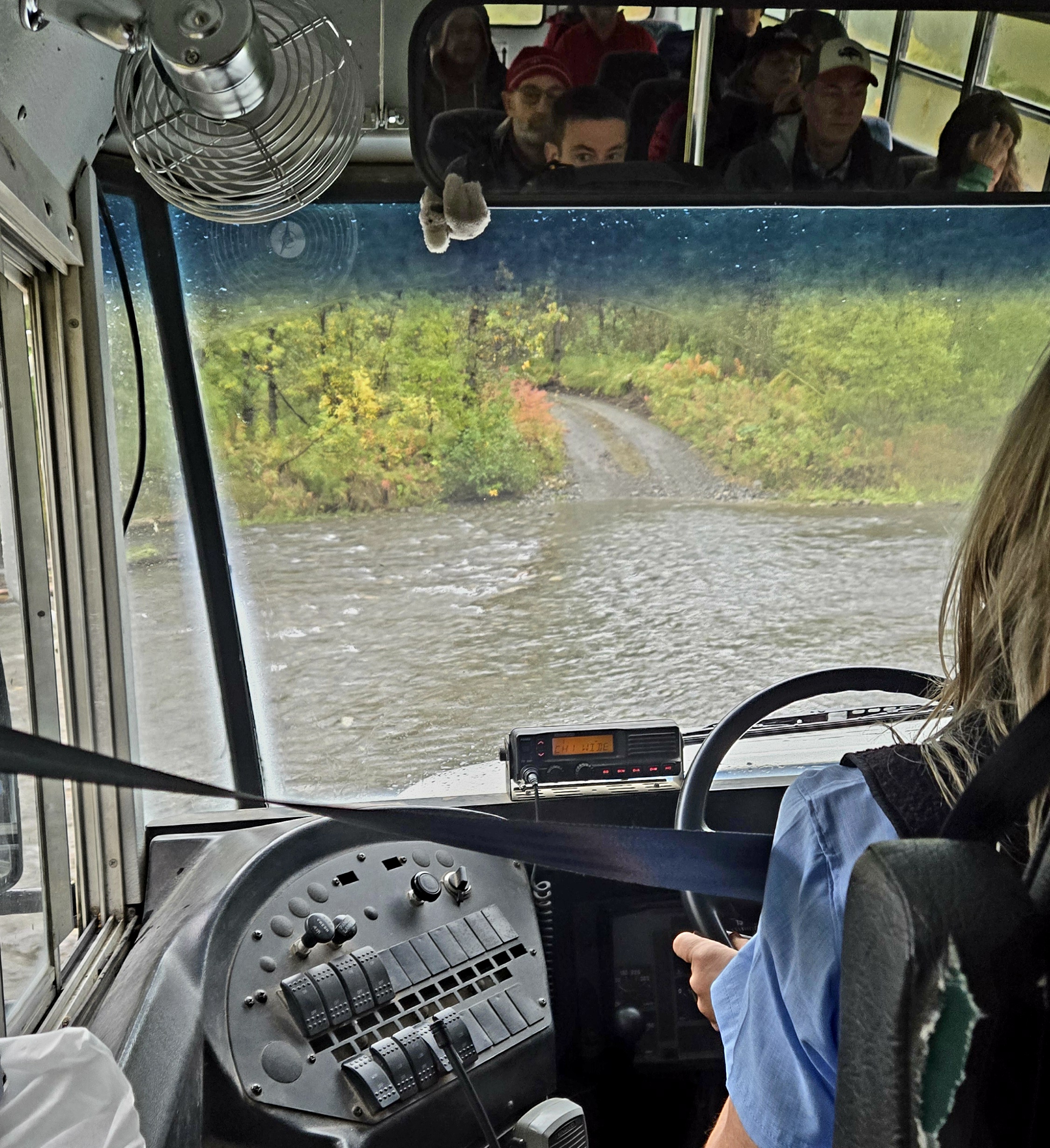

A ranger will join the bus tour each day. Despite what I said above, the focus of this tour is not the wildlife. Instead, the focus is on the history of the Valley of 10,000 Smokes and the Novarupta volcano which had one of the largest eruptions in world history. This is why you want a clear day if you can get one – because the views are incredible. We got an ok day – but it could have been much clearer. The valley now has around 700 feet of volcanic ash and other deposits lying in it and it is an absolutely stunning view from Overlook Cabin (also a visitor center) at the end of the road.
Once you reach the end of the road, it will be time for lunch which you can eat outside or inside the visitor center. Everyone on our tour chose inside as it was quite cool outside and off and on rain. The sack lunch consisted of a sandwich, chips, an apple, and a cookie. Water and coffee were also available. The visitor center has some exhibits for you to browse as well when finished eating. There are also pit toilets available at the end of the road (there also is one bathroom stop along the journey for those wondering). Once everyone is finished eating – you have two options: 1/ Go on a hike or 2/ Hang out at the visitor center while others go on a hike.
We can’t remember the exact timing, but it was around 2 hours of hiking time available. That is a long time to just sit around the visitor center – so most people (not everyone though) tried to hike. The catch on the hike is that it isn’t easy and the ranger makes that very clear. You are hiking down into the valley to either Ukak Falls or the Confluence or both. Regardless of which hiking option you choose, you are going down 800-900 feet in elevation which means you have to climb back up 800-900 feet in elevation which isn’t easy for everyone. We are pretty good hikers and the climb back out of the valley for us was still challenging – so keep that in mind when making your decision. Ukak Falls is about 3.5 miles RT and if you also go to the Confluence (which we of course did), it becomes 4.2 miles RT. The scenery on this hike is stunning with the towering walls of volcanic ash right in front of you. The ranger will typically lead you to Ukak Falls as the end of the trail is sort of confusing, but once you get there, you are on your own for the rest of the time – whether that is climbing back out or taking a detour at the Confluence before climbing back out.
We highly recommend this tour and this is one of the reasons we recommend 3 nights as this tour will take up an entire day leaving the other two days to be pure bear viewing.
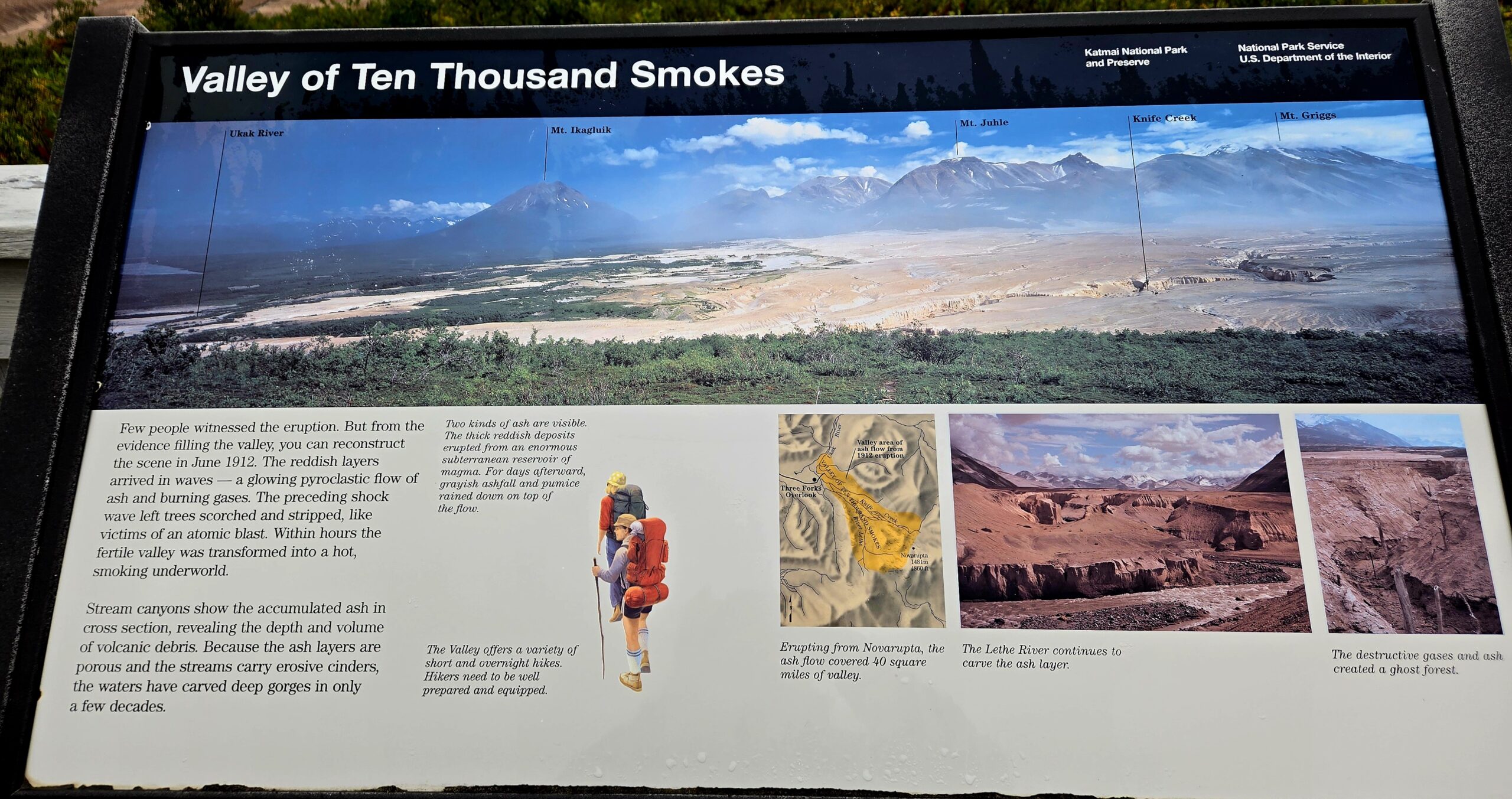


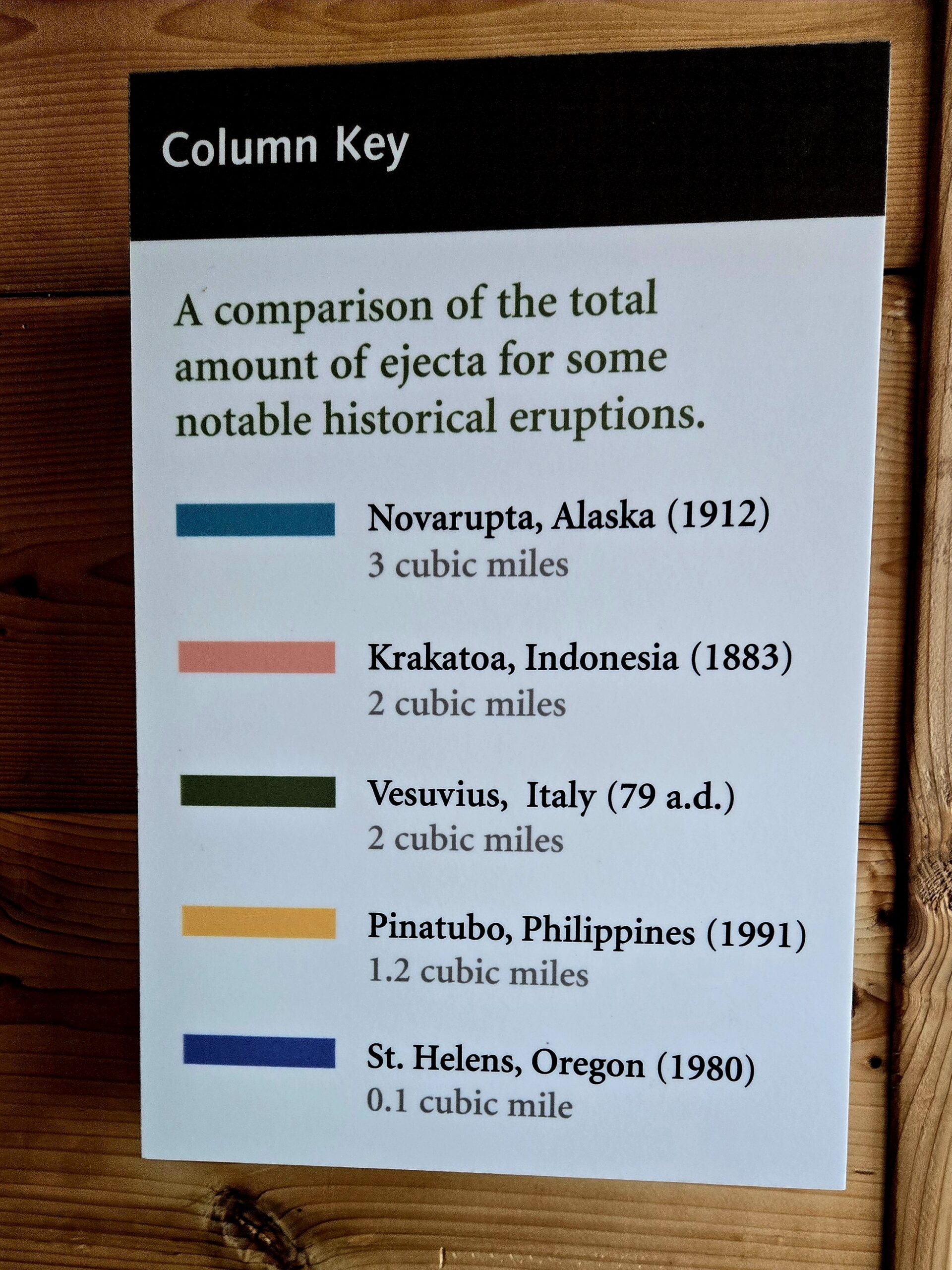
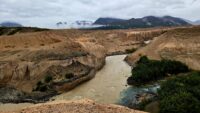
Flightseeing Tours
We have not yet done this on either of our trips, but you can board a float plane for one hour and fly over Katmai National Park seeing the Valley of 10,000 Smokes from the air as well as other areas of the park. In 2024, this cost $400 per person.
Fly Fishing
We also have never done this, but we saw a ton of people doing this every single day. There appears to be several options (by the hour, half a day, or a full day) for guided tours. Many of these fishers in September were walking in the Brooks River doing their fishing right next to the bears. We are sure it wasn’t as close as it seemed, but nothing is going to stop a bear from getting as close to you as it wants while you are on the river.
Hiking
There are not many established trails in this park. You have the 2.4-mile RT walk out to Brooks Falls. You also have a 2.4-mile RT walk out to Lake Brooks which is where the majority of the workers stay during the summer. The main hike though is a 9.5 mile RT which has about 2,550 feet of elevation gain and leaves from Brooks Campground. It takes you up to the top of Dumpling Mountain with panoramic views of Naknek Lake, Lake Brooks, Brooks Falls, and Brooks River on a clear day. We were too exhausted from our Valley of 10,000 Smokes hike to also do Dumpling Mountain – but our friend did do it and really enjoyed it. He saw a couple of bears on the way – but they were fairly far off. He also only saw a few other people on this hike – so you will certainly have solitude if that is what you are looking for.
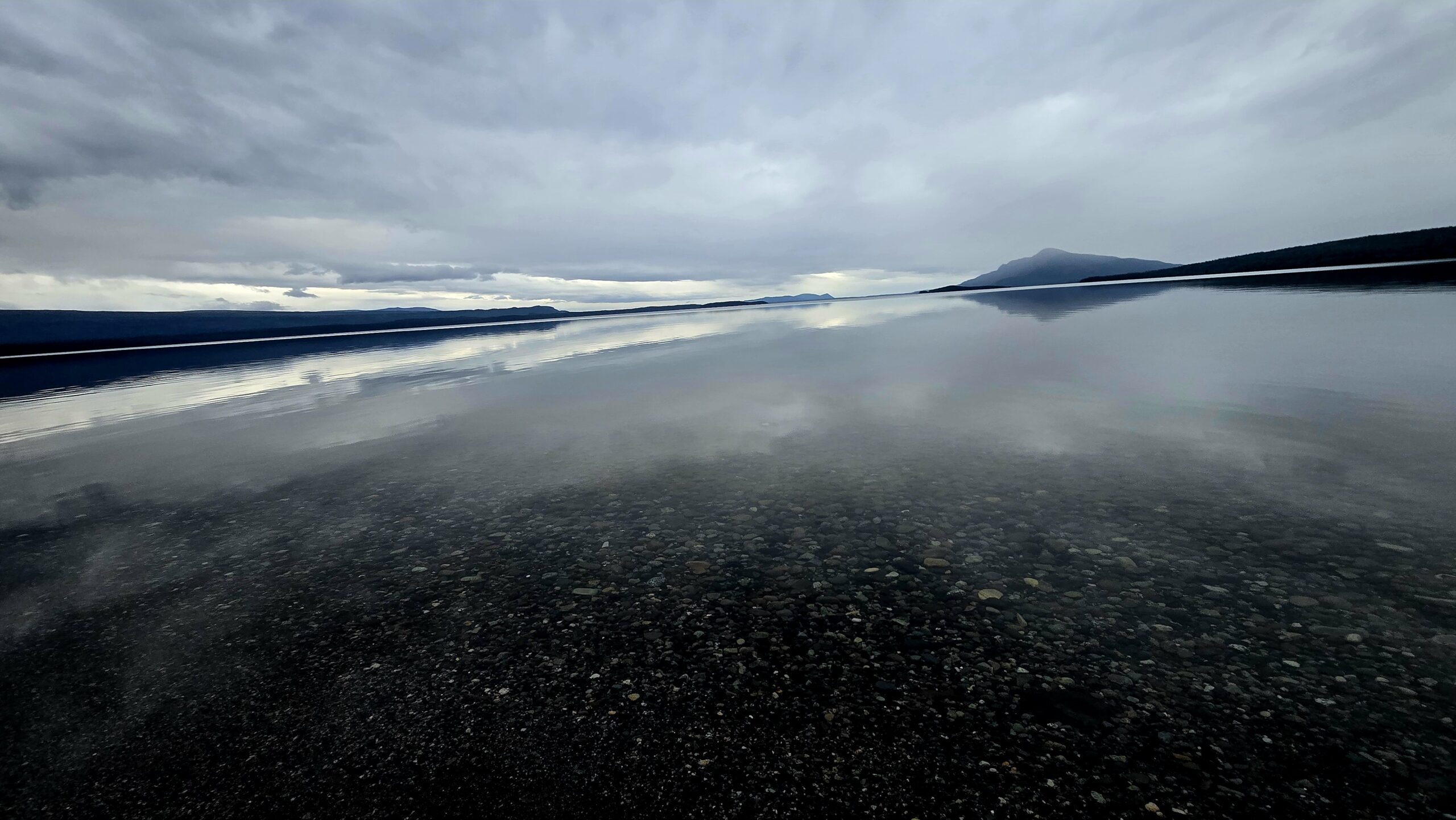
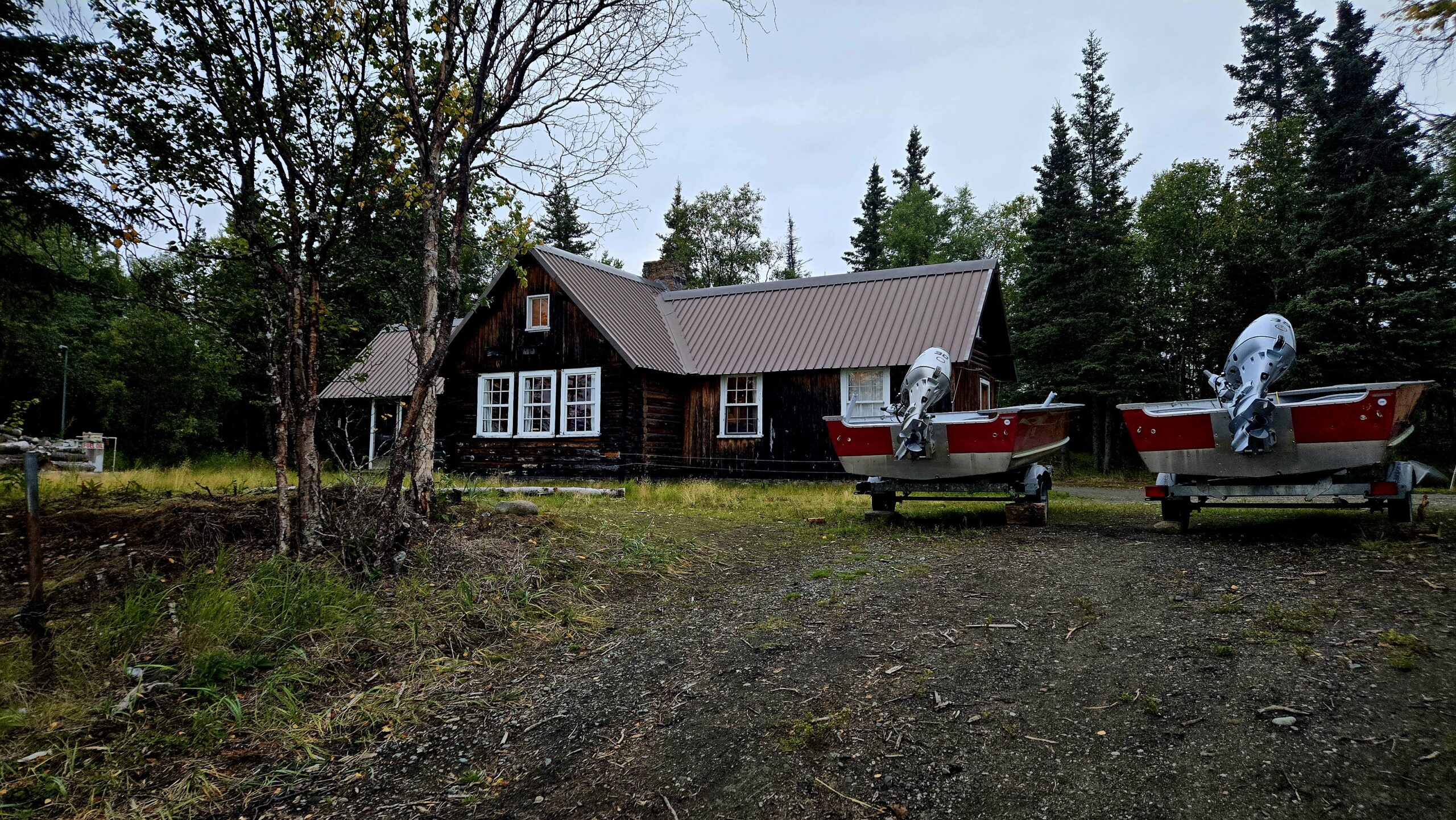
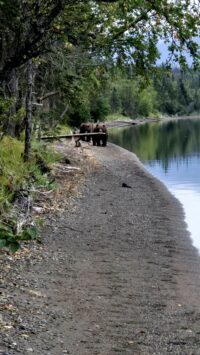

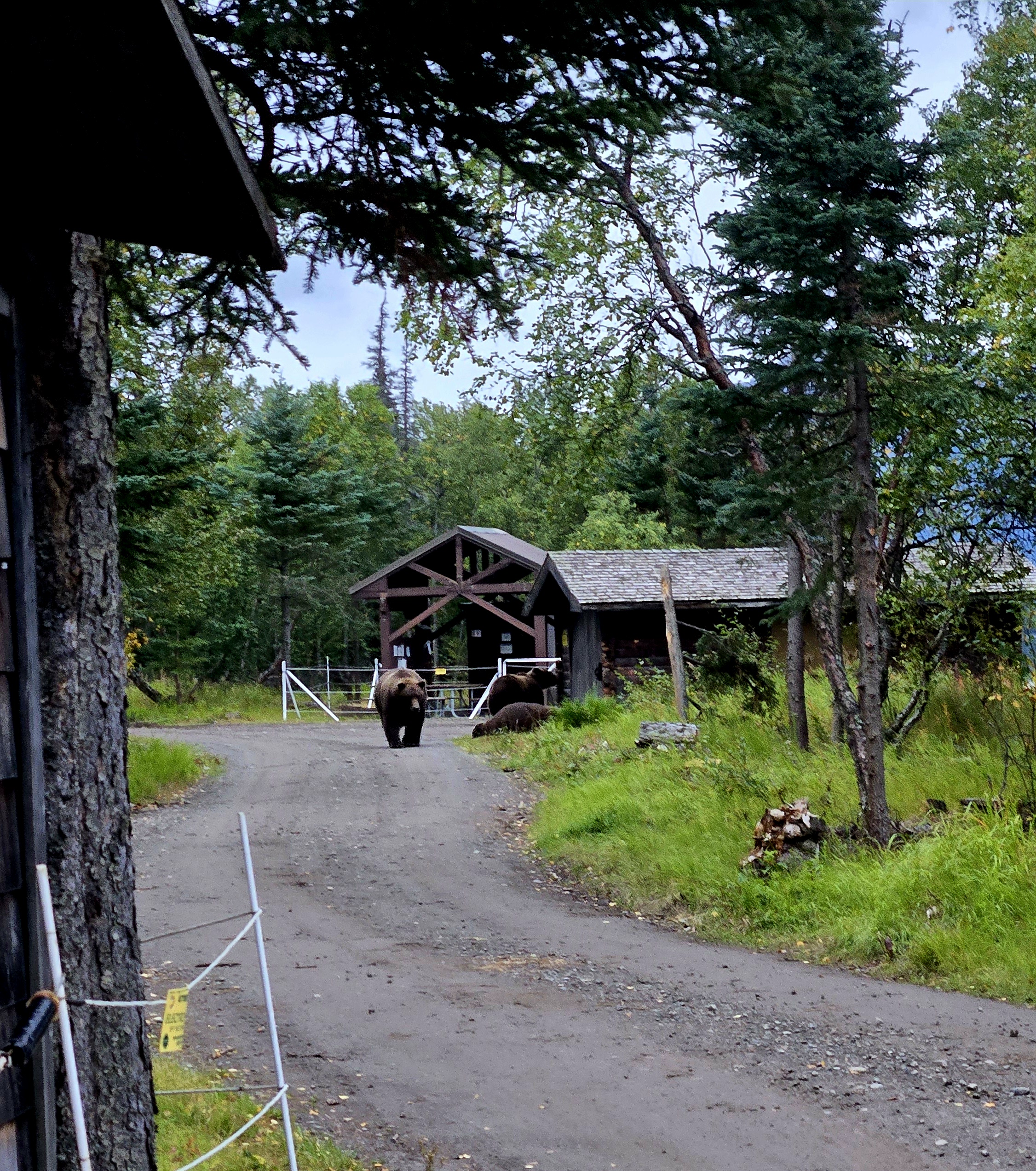

We hope this gives you plenty of options when planning a Katmai National Park vacation. Feel free to send us any questions as they arise!
